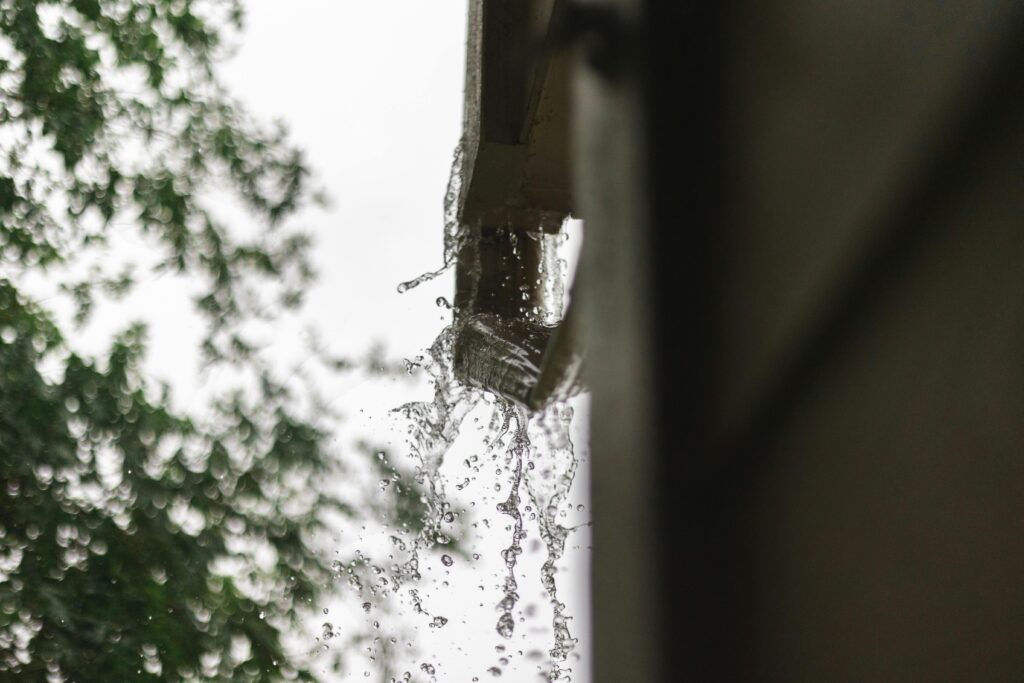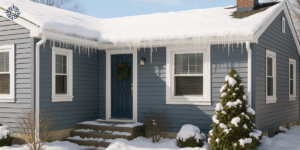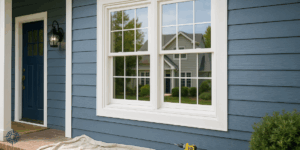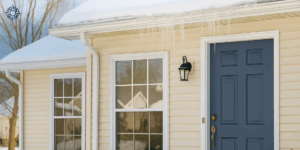Why Gutter Overflow Matters
Gutter overflow may seem like a minor inconvenience—until it’s not. When gutters leak or spill over, water can pool near your home’s foundation, damage your landscaping, stain siding, or seep into your basement. Over time, unresolved gutter overflow becomes a gateway to rot, mold, soil erosion, ice dams, and even foundation cracks.
The good news? Most gutter overflows are preventable with routine maintenance—and easily fixable once the root cause is diagnosed. In this guide, we’ll walk through the most common reasons your gutters might be overflowing, especially at corners and valleys, and explain step-by-step gutter overflow solutions you can put in place to keep your home dry and protected. Whether you’re seeing drips during light rain or gushing water during a downpour, understanding what’s behind the problem is the first step toward solving it.
Why Is My Gutter Overflowing? Common Causes Explained

It’s easy to blame a single bad storm for an overflowing gutter, but gutters are a system, and overflow usually points to one or more underlying issues. Here are the most common causes:
1. Clogs from Debris
Leaves, twigs, pine needles, and granules from aging shingles often collect in gutters and downspouts. When water can’t flow freely, it backs up and spills over the sides.
- Tell-tale signs: Water spilling during light rain, vegetation growing in gutters, overflowing near downspouts.
- Solution: Clean gutters 2–4 times per year, especially after heavy storms or in autumn.
2. Improper Slope (Pitch)
Gutters must be installed at a slight downward angle—about 1/4 inch for every 10 feet—to ensure water moves toward downspouts. A gutter that’s too flat or pitched incorrectly can cause pooling and overflow.
- Tell-tale signs: Standing water in gutters, overflowing in the middle, sagging sections.
- Solution: Rehang or re-level gutters for proper slope.
3. Undersized Gutters
If your gutters are too narrow or shallow for the size and pitch of your roof, they’ll overflow during heavy rainfall. This is especially common with older homes or homes that have added roof square footage.
- Tell-tale signs: Overflow during moderate or heavy rain, especially in valleys or large roof planes.
- Solution: Upgrade to 6-inch or custom-sized gutters that can handle your roof’s water load.
4. Poor Drainage Design
Sometimes, the problem lies beyond the gutter itself. If your downspouts don’t carry water far enough away, or there are not enough downspouts to manage the volume, backups and overflows occur.
- Tell-tale signs: Water pooling near foundation, splashback against siding, flooding near corners.
- Solution: Add more downspouts or extensions to direct water at least 6 feet from the home.
Problem Area: Corners and Roof Valleys
Corners and roof valleys are high-risk zones for gutter overflow because they funnel large volumes of water into small areas. During a heavy rain, water can rush off steep valleys and overload the gutter’s capacity in one concentrated spot.
- At corners, seams are more prone to leaks, and water can bypass the gutter entirely if downspouts are undersized.
- In valleys, water velocity increases due to slope convergence, often overwhelming gutter sections that weren’t reinforced or widened.
Solutions include:
- Installing splash guards or gutter overflow diverters at corners and valleys to catch water that would otherwise overshoot the gutter.
- Reinforcing those areas with larger or deeper gutter sections and additional brackets to prevent sagging.
Practical Gutter Overflow Solutions That Work
Here are proven strategies to prevent gutter overflow and extend the life of your gutter system:
1. Clean Gutters Regularly
Simple but critical. Whether you do it yourself or hire a pro, clearing out leaves and debris reduces 90% of common overflow issues. Aim for twice a year minimum, or more if your home is surrounded by trees.
2. Install a Gutter Overflow Guard
These angled or curved attachments are placed on the outside edge of gutters, especially near corners or roof valleys. They help catch and redirect fast-moving rainwater into the gutter rather than over the side.
Also called splash guards, they’re an affordable and effective solution for overflow at corners.
3. Use a Gutter Overflow Diverter
A diverter is a small, raised section inside the gutter that channels high-volume water toward the downspout. These are useful in roof valleys or any place water flow is concentrated.
4. Upgrade to Oversized Gutters
Most homes are equipped with 5-inch gutters, but if your roof has steep pitches or large surface areas, 6-inch gutters offer a 40% increase in capacity. This can eliminate most overflow issues entirely.
5. Add More Downspouts
Downspouts should be spaced about every 30 to 40 feet. If you have longer runs or water is pooling near the ends, adding another downspout will help prevent backups.
6. Extend Downspouts Away from the Home
Water should be carried at least 6 feet from the foundation to avoid soil erosion and basement flooding. Downspout extensions or splash blocks are affordable and easy to install.
7. Install Leaf Guards or Gutter Screens
Prevention goes a long way. Leaf guards block large debris from entering the gutter system, reducing the frequency of clogs and the risk of overflow. Look for micro-mesh or reverse-curve styles for best performance.
Using Gutter Overflow Guards, Diverters, and Extensions
Let’s break down a few of these solutions in more detail so you know what to expect when planning your fix:
Gutter Overflow Guards
- Ideal for corners or valleys.
- Installed directly into or over the gutter lip.
- Can be made of metal or plastic.
- Prevents water from shooting off the roof like a waterfall.
Gutter Overflow Diverters
- Internal components that redistribute fast water flow.
- Can be used alone or with guards.
- Great for targeted overflow control without replacing the entire system.
Downspout Extensions
- Easily attach to the base of a downspout.
- Foldable or fixed styles available.
- Move water away from the foundation to prevent pooling or erosion.
Each of these upgrades can be completed as a DIY weekend project, but professional installation ensures proper sizing and placement—especially on older or complex gutter systems.
Troubleshooting Checklist: What to Look For
Use this quick checklist to identify your issue and choose the right solution:
| Problem | Possible Cause | Recommended Fix |
| Water spilling during light rain | Clogged gutters or downspouts | Clean gutters, install leaf guards |
| Overflowing at gutter corners | High water velocity, poor pitch | Add splash guard, check slope |
| Water pooling near foundation | Short or missing downspout ext. | Install extensions or splash blocks |
| Overflow in valleys | High-volume water flow | Add diverter or install larger gutters |
| Gutter sagging or misaligned | Improper slope, loose brackets | Re-level or rehang gutter section |
Call in the Pros: How Compass Exteriors Helps Homeowners
At Compass Exteriors, we specialize in diagnosing and solving gutter overflow and leak problems across the Minneapolis area. From clogged corners to sagging sections, we’ve seen it all—and fixed it all. Our team offers comprehensive inspections, professional cleaning, and long-term upgrades like gutter overflow diverters, leaf guard installations, and seamless gutter replacements.
Don’t wait until water damage shows up on your siding or foundation. If you’re wondering why your gutters are overflowing, let our experts walk your roofline and build a solution that works—for your home and your budget.
Schedule a gutter inspection with Compass Exteriors today, and stop gutter leaks before they start.







